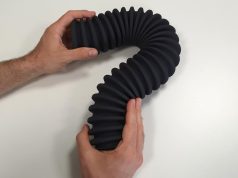Few industries have reacted so quickly and innovatively to the COVID-19 crisis as the additive manufacturing (AM) industry. Immediately after the first delivery bottlenecks became apparent, numerous solutions emerged from the community.
Although the AM industry has not been entirely spared from the consequences of the COVID-19 crisis, the sector shines like no other, and it is actively and innovatively resolving supply issues in medicine and industry. According to Dr Johannes Gartner of the Johannes Kepler University (www.jku.at), this is hardly surprising. ‘The ability to react quickly to complex challenges is deeply rooted in the DNA of 3D printing,’ says the innovation researcher, who sees additive manufacturing as digital and interdisciplinary technology. In every printing process, a combination of materials science, process engineering and mechanical engineering can be observed. In the product development phase, these interdisciplinary skills are enriched by the creativity and expert knowledge of the application industry. ‘This interdisciplinary interaction enables a high degree of flexibility and leads to strong innovative ability. The resulting competencies not only stick to the AM machine but also become part of the company culture,’ says Gartner. The strength of these valuable skills is particularly evident in highly dynamic environments and during crises.
The crisis as an opportunity
‘The crisis has once again demonstrated the potential of additive manufacturing to react quickly to complex challenges,’ confirms Dr Johannes Homa, president of AM Austria. During the crisis, the technology platform of the Austrian AM industry started its own initiative to pursue the goal of making AM resources accessible at short notice that enjoys broad national and international participation. ‘The flexibility, as well as the variety of materials available, make additive manufacturing the ideal technology to react quickly to changing challenges. Furthermore, it also enables regional and independent production – not only in times of crisis,’ says Homa. Corresponding examples can be found at the Viennese company Cubicure (www.cubicure.com) as well as at the TU-Graz (www.tugraz.at). During the crisis, the 3D printer manufacturer developed sterilizable filter masks on short notice, and the Institute of Innovation and Industrial Management printed face shields for Styrian hospitals.
Based on what is happening during the COVID-19 crisis, and to make the advantages of additive manufacturing accessible to as many recipients as possible, the technology platform AM Austria has announced an increased commitment. ‘We are going to develop existing quality standards further and advocate for more favourable framework conditions to utilize the full potential of additive manufacturing,’ says Homa.
Subscribe to our Newsletter
3DPResso is a weekly newsletter that links to the most exciting global stories from the 3D printing and additive manufacturing industry.




























